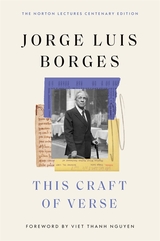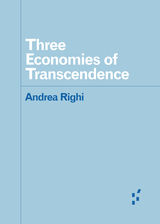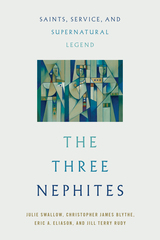
Ignatios the Deacon was a key figure in the revival of literary culture that took place at Constantinople in the first half of the ninth century. He is best known for his hagiographical works, but he also wrote poems, compiled an anthology of ancient proverbs, and edited textbooks. For some time he served as bishop of Nicaea under an Iconoclastic regime, but later repented of his errors and moved into the “orthodox” camp.
Preserved in a single manuscript, Ignatios’s correspondence has remained practically unknown to scholars. Some of the letters deal with literary trifles, while others contain valuable information on the social and economic history of the period. Taken together, they afford a unique glimpse into the activity of a Byzantine intellectual, struggling to survive in a time of bitter doctrinal strife.

Ignatios the Deacon was a key figure in the revival of literary culture that took place at Constantinople in the first half of the ninth century. He is best known for his hagiographical works, but he also wrote poems, compiled an anthology of ancient proverbs, and edited textbooks. For some time he served as bishop of Nicaea under an Iconoclastic regime, but later repented of his errors and moved into the “orthodox” camp.
Preserved in a single manuscript, Ignatios’s correspondence has remained practically unknown to scholars. Some of the letters deal with literary trifles, while others contain valuable information on the social and economic history of the period. Taken together in The Correspondence of Ignatios the Deacon, his letters afford a unique glimpse into the activity of a Byzantine intellectual, struggling to survive in a time of bitter doctrinal strife.

This latest volume of Dumbarton Oaks Papers focuses in part on literary and historical texts: historicism in Byzantine thought and literature; the Chronicle of Matthew of Edessa, encompassing the First Crusade and the Armenian diaspora; and a reappraisal of the satirical prose work Mazaris’s Journey to Hades. The history and architecture of the Cypriot Monastery of Saint John Chrysostomos at Koutsovendis occupy a lengthy and informative chapter, which also includes a first edition of the “Letter of Nikon of the Black Mountain to the Founder George.”
The volume also contains selected papers from the 2005 Dumbarton Oaks symposium on the archaeological evidence for settlement patterns in Anatolia and the Levant between 500 and 1000.

The middle of the ninth century was a particularly momentous period in the history of the Byzantine Empire. The Iconoclast movement, which had divided Eastern Christendom for over a century, was finally liquidated; the Slavs were converted to Christianity, thus immeasurably enlarging the orbit of Byzantine cultural influence; and a renewed interest in classical literature and learning assured the preservation of the ancient Greek heritage. It was also when the growing hostility between the Eastern and Western Churches erupted in the first great schism.
The homilies of the patriarch Photius—unquestionably the greatest figure of his time—hold an important place among the literary documents of the ninth century. Although the original Greek texts were published early in the twentieth century, his homilies remained almost unread by modern historians. Cyril Mango has translated the homilies into English, making this primary source of the intellectual, religious, and political history of the ninth century available to a wider audience.

The Short History or Breviarium of Nikephoros, patriarch of Constantinople (d. 828), covers the period 602–769 and is one of the two Greek historical texts that relate the fortunes of the Byzantine Empire and its neighbors during that difficult period. Despite its brevity, it is a source of primary importance for the study of events in medieval eastern Europe and the Near East, including the dramatic reign of Emperor Herakleios (610–641), the Arab conquests, the establishment of the Bulgarian state, and Byzantine iconoclasm. Not being an eyewitness to the events he describes, Nikephoros had to rely on earlier sources, now lost to us, which he paraphrastically rendered in ancient Greek so as to attain the stylistic elegance that was expected of a “history.”
The English translation is accompanied here by succinct commentary that sets out the basic problems posed by the Short History and provides essential guidance for the reader.

The Short History or Breviarium of Nikephoros, patriarch of Constantinople (d. 828), covers the period 602–769 and is one of the two Greek historical texts that relate the fortunes of the Byzantine Empire and its neighbors during that difficult period. Despite its brevity, it is a source of primary importance for the study of events in medieval eastern Europe and the Near East, including the dramatic reign of Emperor Herakleios (610–641), the Arab conquests, the establishment of the Bulgarian state, and Byzantine iconoclasm. Not being an eyewitness to the events he describes, Nikephoros had to rely on earlier sources, now lost to us, which he paraphrastically rendered in ancient Greek so as to attain the stylistic elegance that was expected of a “history.”
The English translation is accompanied here by succinct commentary that sets out the basic problems posed by the Short History and provides essential guidance for the reader.
READERS
Browse our collection.
PUBLISHERS
See BiblioVault's publisher services.
STUDENT SERVICES
Files for college accessibility offices.
UChicago Accessibility Resources
home | accessibility | search | about | contact us
BiblioVault ® 2001 - 2025
The University of Chicago Press









